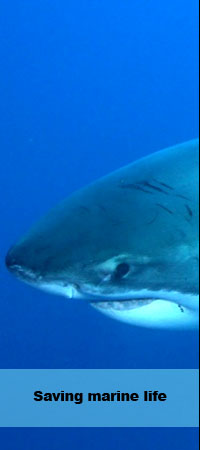Forest giraffe under intense threat
The Okapi (Okapiajohnstoni) also known as the “forest giraffe” is now on the brink of extinction. The estimate is based on figures from surveys in the Okapi Wildlife Reserve (Réserve de Faune a Okapis) showing a 43% decline from 1995 to 2007 and a further 47% decline from 2008 to 2012, in addition to reported declines and extirpations in other parts of known range and loss and degradation of habitat that is ongoing since 1980.Major threat to this species includes habitat loss due to logging and human settlement. Okapi is found in Congo and in the Democratic Republic of the Congo where ESI protects rainforest. It is gone in Uganda. Okapis are mostly diurnal and inhabit closed and high canopy forests between about 500 m and 1,500 m in elevation occurring in wide range of primary and older secondary forest types.
Good news for European large carnivores
Europe is home to five species of large carnivores: the Wolf (Canis lupus), the Eurasian Lynx (Lynx lynx), the Iberian Lynx (Lynx pardinus), the Brown Bear (Ursusarctos) and the Wolverine (Gulogulo). Over the last centuries they have been heavily persecuted by humans for a range of reasons, which led to historic lows in their distribution and density in the mid dle of the 20th century. Since then, the species have made dramatic recoveries across Europe. Europe is now home to around 40,000 large carnivores, excluding countries such as Russia, Belarus or Ukraine. Bears are the most abundant (18,000), followed by wolves and Eurasian Lynx (10,000 each) and wolverines (2,000). The rebound of European large carnivores is the results of stronger laws, increase in protected areas, and change in attitude towards carnivores.
A quarter of sharks and rays threatened with extinction
Sharks, rays and chimaeras tend to grow slowly and produce few young, which leaves them particularly vulnerable to overfishing. Sharks, rays and chimaeras are known as ‘cartilaginous fish’ due to the fact that their skeletons are made of cartilage rather than bone. They are one of the world’s oldest and most ecologically-diverse groups of animals.The Indo-Pacific, particularly the Gulf of Thailand and the Mediterranean Sea are the two ‘hotspots’ where the depletion of sharks and rays is most dramatic. The Red Sea is also home to a relatively high number of threatened sharks and rays.Of the 1,041 known species of chondrichthyan fish, 25 are listed as critically endangered, 43 are endangered, and 113 are vulnerable to extinction. This is the worst reported status for any major vertebrate group except for amphibians.
ESI vigorously opposes deep fishing
Endangered Species International (ESI) fights against illegal fishing at various levels (local and international). Illegal fishing including deep fishing is a major threat to the sustainability of the world’s fisheries and ocean. Illegal and unregulated fishing causes annual financial losses of up to $23.5 billion worldwide and accounts for up to 20 percent of all of the wild marine fish caught globally. In some parts of the world, the situation is even more severe. For example, fisheries scientists estimate that illegal fishing accounts for up to 40 percent of fish caught in West Africa. Further, dramatic efficiencies in fishing methods and gear have led to a tragic consequence: wasteful exploitation of sea life vital to the ocean ecosystem and human food security. Large-scale commercial fishing including devastation deep fishing continues to have a major impact on marine ecosystems worldwide. Of 600 marine species monitored by the United Nations Food and Agriculture Organization, only 23 percent are not overexploited. Please join ESI to support our work to save the ocean.
European bats are coming back!
After decades of decline, bats make a spectacular comeback on the European continent. Their numbers have increased by over 40% between 1993 and 2011, according to the European Environment Agency (EEA). This study, the most comprehensive ever conducted on the Old Continent, helped identify the bat populations in 6000 hibernation sites in nine countries (Germany, Austria, Hungary, Latvia, Netherlands, Portugal, United Kingdom, Slovenia and Slovakia. It is extremely encouraging to see the populations of bats increase again after a massive decline. Several human activities were responsible for the sudden disappearance of the flying mammals including agricultural intensification, fragmentation and destruction of natural habitats, use of toxic chemicals on roofs and direct voluntary destruction.
|









